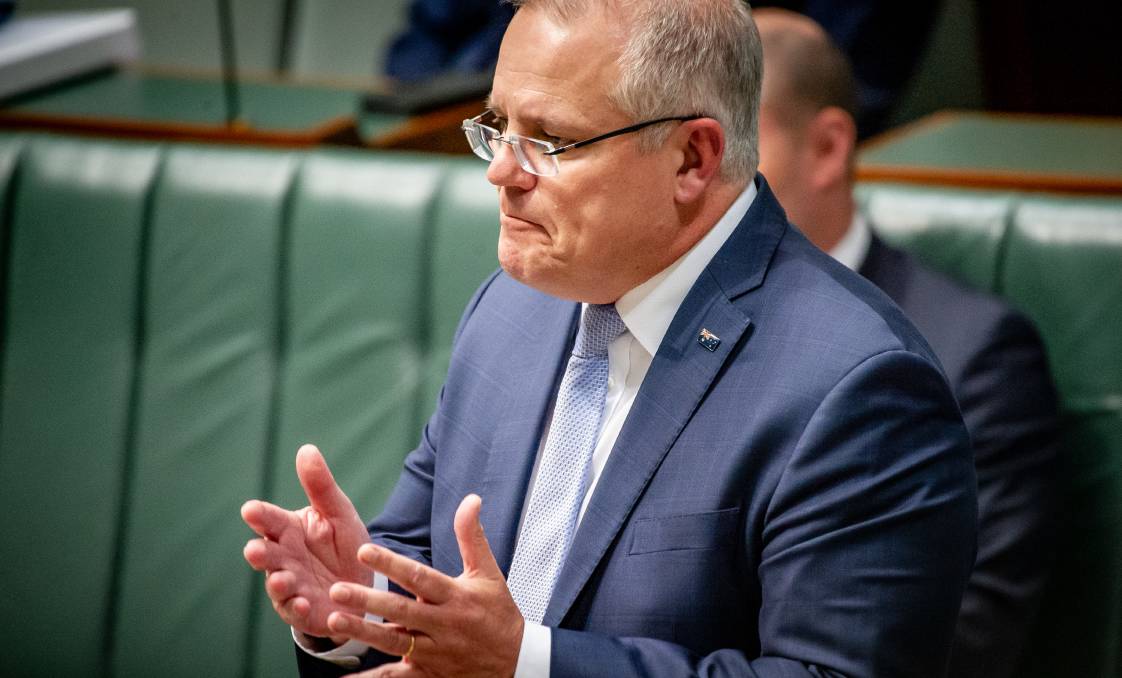Morrison government lays down five technologies for its clean energy investment
- Written by The Conversation

The Morrison government will tell its refocused clean energy agencies and the clean energy regulator to give priority to investment in five low emissions technologies and report how they are accelerating them.
The technologies are clean hydrogen, energy storage, low carbon steel and aluminium, carbon capture and storage, and soil carbon.
The government last week announced it would legislate to extend the remit of the Australian Renewable Energy Agency (ARENA) and the Clean Energy Finance Corporation (CEFC) beyond renewables.
On Tuesday it will indicate the “priority low emissions technologies” they, and the Clean Energy Regulator (CER) – which is responsible for administering the government’s emissions reduction fund – should concentrate on.
Energy Minister Angus Taylor, in a Tuesday speech on low emissions technology, will say the government is putting technologies into four categories. Apart from the priority low emissions technologies, the other categories are emerging and enabling technologies, “watching brief” technologies, and mature technologies.
Priority technologies “are those expected to have transformational impacts here and globally and are not yet mature,” Taylor says in his speech, released ahead of delivery.
“They are priorities where government investments can make a difference in reducing costs and improving technology readiness.
"Technologies where we, as a government, will not only prioritise our investments but where we will streamline regulation and legislation to encourage investment.
"Investors will have confidence that identified priority technologies are of long-term strategic importance for the government.”
Emerging and enabling technologies, such as those for energy efficiency and infrastructure for electric and hydrogen vehicle charging/ refuelling, will also be included in the mandate of the government’s investment agencies.
In the “watching brief” category are those that are for the longer run or are longer odds, such as direct air capture and small nuclear modular reactors. (There is a moratorium on nuclear power in Australia at the moment but the government is watching developments in Europe and the United Kingdom.)
Notably, key renewables and key fossil fuels are in the “mature” category, which includes coal, gas, solar and wind.
The government says it will only invest in them where there is market failure or where such investments secure jobs in key industries.
Last week Scott Morrison threatened to build a gas power station in the Hunter region if private investors left a supply gap for when the Liddell coal-fired station closes, while he also indicated renewables could now stand on their own feet.
Taylor will release an overarching technology roadmap, which he says “arms the government with "four levers to enact change”: an investment lever, a legislative lever, a regulator lever, and international co-operation and collaboration.
“The roadmap will guide the deployment of the $18 billion that will be invested, including through the CEFC, ARENA, the Climate Solutions Fund [which will evolve from the Emissions Reduction Fund] and the CER.
"This will turn that into at least $50 billion through the private sector, state governments, research institutions and other publicly funded bodies. That will drive around 130 000 jobs to 2030,” Taylor says.
The legislative level “is about flexibility and accountability.
"We don’t currently have that. Our agencies are restricted by legislation and regulation to invest in the new technologies of 2010 not the emerging technologies of 2020.”
The regulator lever “is about enablement”.
Taylor says the government’s plan is not based on ideology but “balance and outcomes”.
The government is announcing several “stretch goals” (see table for details). Stretch goals are the point at which new technologies become competitive with existing alternatives. The government announced the hydrogen stretch goal earlier in the year.
“Getting these technologies right will strengthen our economy and create jobs,” Taylor says.
“This will significantly reduce global emissions, across sectors that emit 45 billion tonnes annually.
"Australia alone will avoid 250 million tonnes of emissions by 2040.”
He says “Australia can’t and shouldn’t damage its economy to reduce emissions”.

















